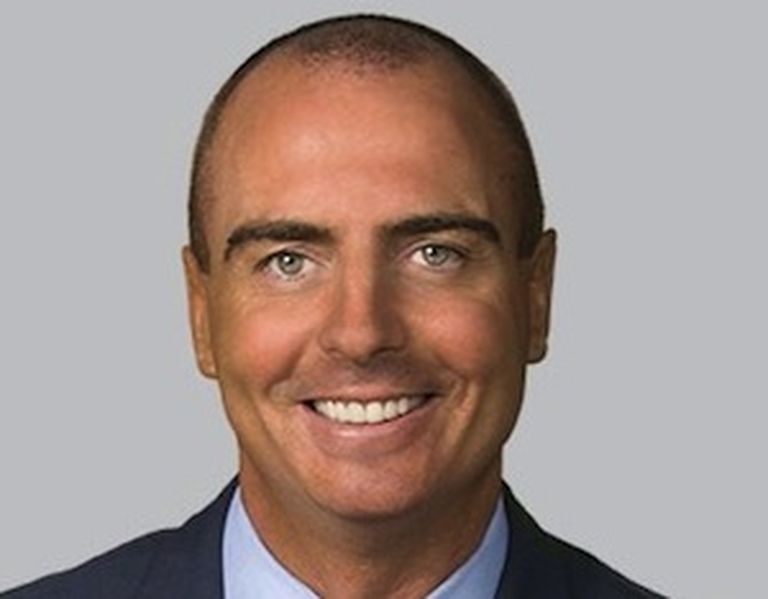Dell's $67 billion buyout of EMC received EMC shareholder approval on July 19, 2016. Fast forward one year later, and the Dell EMC business combination has shown considerable channel partner program momentum -- even as the company experiences quarterly financial losses.

No doubt, Dell Technologies (the company's corporate name) has put its best foot forward in the IT channel. From John Byrne, president of global channels at Dell EMC, to Cheryl Cook (pictured above), VP of global channels and alliances, the company's message to partners has been remarkably consistent.
After shareholders approved the Dell EMC deal in July 2016, the two companies came together in September 2016, and a new Dell EMC partner program officially launched in February 2017. The key goals: Deliver a unified program that’s simple, predictable and profitable.
Generally speaking, I believe Dell and EMC have achieved those goals. Sort of like retrofitting two airplanes in mid-flight -- and combining them into a single airliner -- the challenges were certainly ominous. For instance, some EMC partners initially were concerned about falling incentives while some Dell partners were concerned about deal registration challenges and occasional competition from Dell’s direct sales force.
Fast forward to present day. There have been some occasional bumps -- including Dell dismissing some employees and partners that violated channel conflict rules, Cook tells ChannelE2E. But overall, complaints about the partner program have been remarkably small, according to our ongoing coverage of the company.
Dell Q1 2018 Milestones
Among the key milestones to note: Partners delivered 6,000 net new customers to Dell Technologies during the company's fiscal Q1 2018, Cook says. Moreover, the company has momentum across desktops, servers, storage and more, she asserts.
Anecdotal data points from Dell reinforce those points. During the company's fiscal Q1 2018:
- PC shipments rose 6.2 percent year-over-year, with 17 consecutive quarters of year-over-year PC unit share growth.
- The Infrastructure Solutions Group generated $6.9 billion of revenue in the first quarter, which included $3.2 billion in servers and networking and $3.7 billion in storage, with an operating income of $323 million. However, I don't believe Dell disclosed year-over-year comparisons.
- Dell claims to be the worldwide market share leader in x86 servers, with PowerEdge units and revenue growth up by double digits in the fiscal quarter.
- Demand for the company's hyperconverged portfolio grew at a triple-digit rate, while demand for all-flash solutions grew at a very high double-digit rate.
Cloud, Recurring Revenue
Admittedly, ChannelE2E has expressed concerns about Dell EMC's reliance on traditional hardware sales, especially when channel partners are racing toward managed services, cloud services, remote management and OpEx solutions for customers.

Still, Dell EMC is making progress amid that new market reality. Among the business units to watch: The company says its Virtustream Public Cloud business experienced roughly 100 percent adoption growth for mission-critical applications in Q1. Virtustream has been careful not to compete head-on against Amazon Web Services and Microsoft Azure. Instead, the business focuses on running customers' specialized mission critical applications in the cloud.
Overall, it sounds like Virtustream is gaining momentum -- though Dell doesn't disclose actual revenues or profit figures for the business unit. Also, competition could be intensifying. Key Virtustream partners include SAP -- though AWS has been ramping up support in that area.
And don't forget: Dell EMC also owns VMware -- which has growing momentum amid the shift to network and storage virtualization. And the VMWare-AWS relationship will deliver a VMware Cloud for AWS service later this year.
Dell Financial Service, OpEx Options
Meanwhile, Dell Financial Services has also introduced special programs that allow partners and customers to consume solutions on an OpEx (rather than CapEx) basis. The offerings stretch across Dell's data center solutions -- which means partners can deploy hybrid clouds at a more predictable monthly cost for customers.
Among the programs to check out: Dell Cloud Flex Pay, which allows partners and customers to evaluate Dell Hybrid Cloud System for Microsoft -- and even return it. Traditional CapEx models also remain in place for customers who prefer that approach.
"We're really educating our customers, our partners and their CFOs about Dell Financial Services," says Cook. Demand for the OpEx-oriented financing programs has seen significant growth, she adds, and Dell continues to see good adoption on those fronts.
Dell Profits, Losses and Debt
While Dell EMC's partner program appears to have momentum, the overall company still faces market challenges. As more workloads shift to public clouds, Dell Technologies will need to both connect to those clouds and sell infrastructure into those clouds.
Those tasks won't be easy, especially since major cloud and SaaS companies like Amazon, Google, Facebook and Microsoft increasingly leverage commodity hardware and open source in their data center designs.
Some critics also point to Dell's overall financial picture. The company lost $1.5 billion In the first quarter of fiscal 2018, which ended in May. In the same quarter the year prior, Dell lost $139 million, notes WBJ Journal. Also, for the fiscal year that ended in February, Dell had a net loss of more than $3.7 billion. For the prior year, it lost $1.2 billion, WBJ noted.
Still, Dell points to its cash position and commitment to paying down debt. The company ended Q1 2018 with a cash and investments balance of $14.9 billion. Moreover, the company has paid down approximately $7.1 billion in gross debt, resulting in a $200 million reduction in annualized interest expense on a run-rate basis, since closing the EMC acquisition. The company also has repurchased $1.1 billion of Class V Common Stock under both the previously announced Class V Group and DHI Group repurchase programs, Dell said in June.
Same Call, Different Quarter
Meanwhile back in the channel, Dell's communications remain remarkably consistent. During ChannelE2E quarterly briefings with Cook, she typically points to multiple partner gains and specific product gains, and partner program priorities for the weeks and months ahead.
In some ways, the calls are very predictable. And that's precisely the point.




